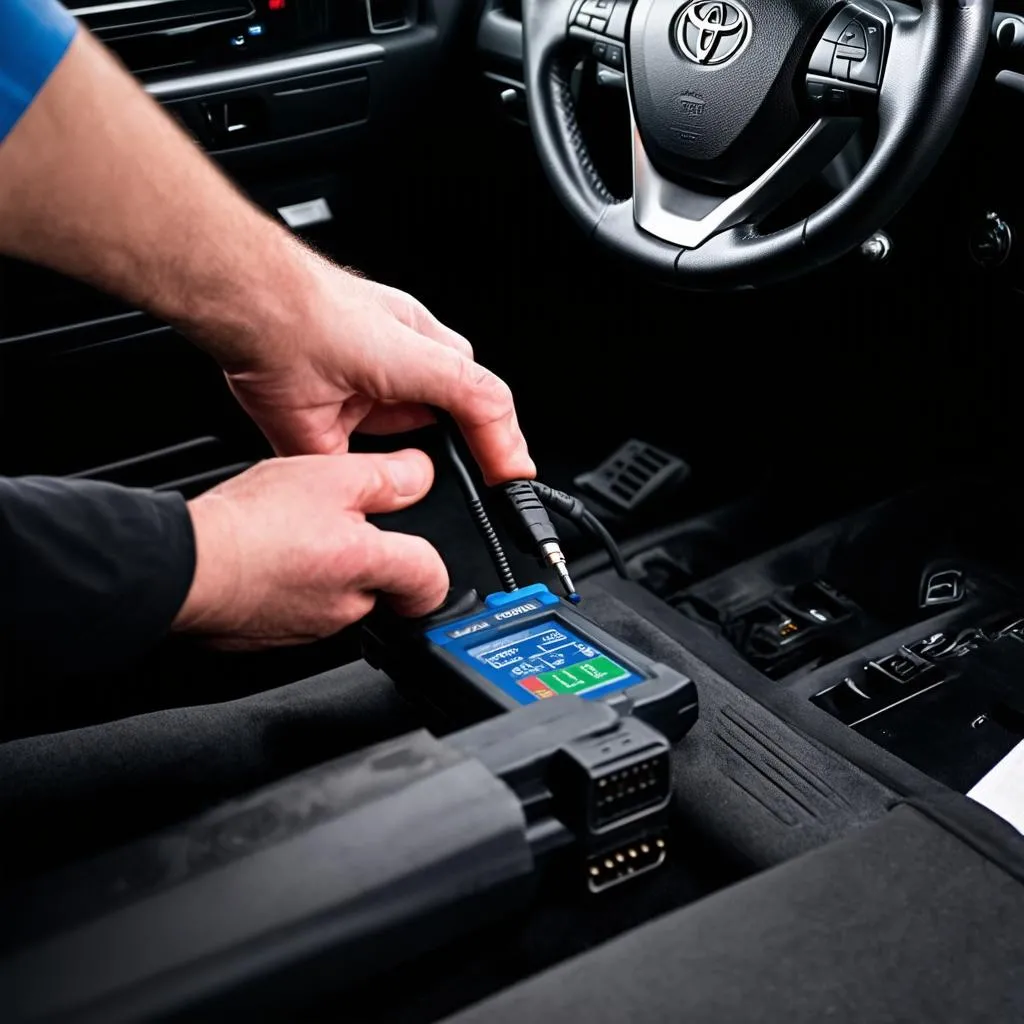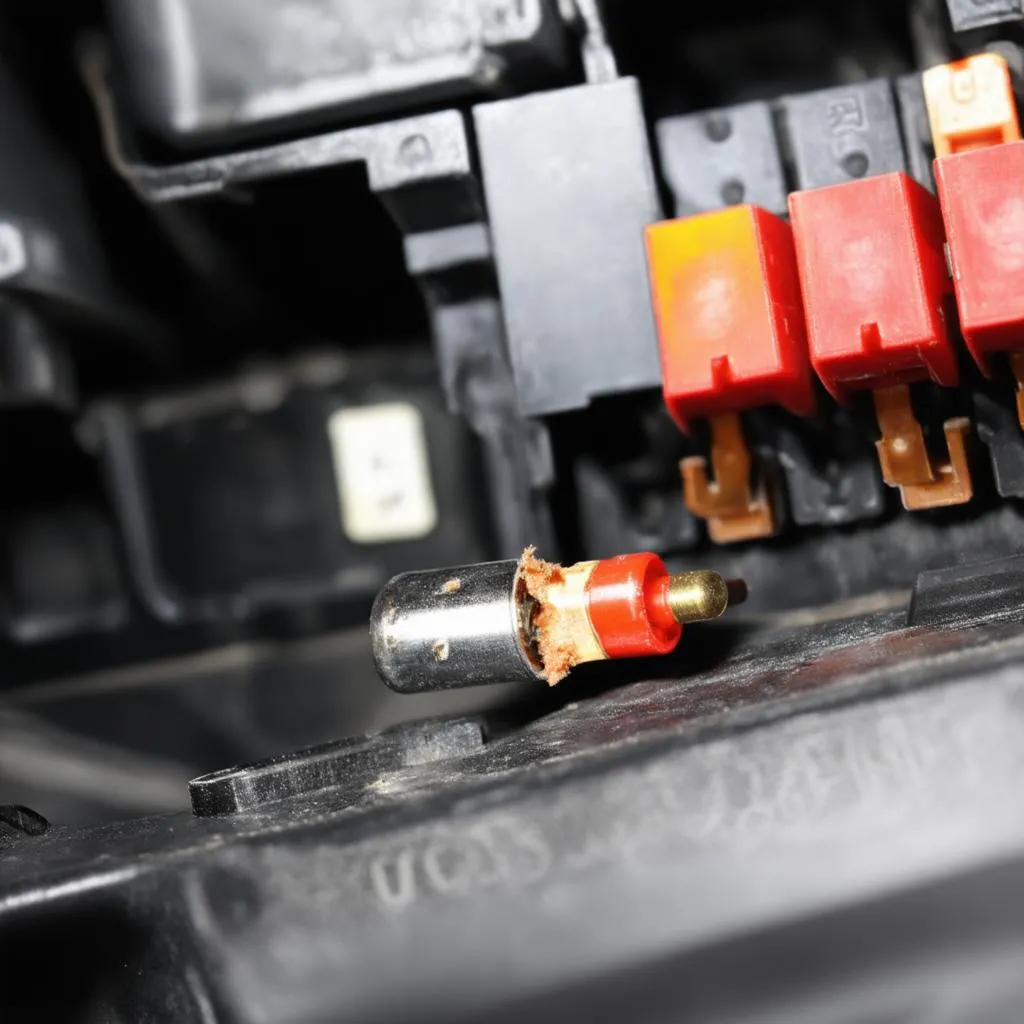“My check engine light came on last week,” John sighed, recounting his car troubles over coffee. “Took it to the mechanic, and all they could say was ‘OBD has power but no communication.’ Sounds like my teenager, talking in riddles!”
John’s frustration is a common experience for many Toyota owners. An unresponsive OBD port can feel like trying to talk to a brick wall, but fear not! This article delves into the common reasons behind “OBD has power but no communication” issues specifically in Toyota vehicles and offers practical solutions to get you back on the road.
Decoding the Mystery: What Does “OBD Has Power But No Communication” Mean?
Your car’s On-Board Diagnostics (OBD) port, often located under the dashboard, is essentially a communication hub for your vehicle’s computer system. Mechanics use a scan tool that plugs into this port, allowing them to “talk” to your car’s computer, read diagnostic trouble codes (DTCs), and pinpoint issues.
When your Toyota’s OBD port has power (meaning your scan tool lights up when plugged in) but can’t establish communication, it signifies a breakdown in this communication pathway. Imagine trying to send a text message with full bars of service, but the message won’t go through – frustrating, right?
Reasons Your Toyota’s OBD Port Might Be Mum
Several culprits could be behind the communication breakdown. Here are the most common:
1. Blown Fuse:
The OBD port, like other electrical components in your car, is protected by a fuse. If this fuse blows, communication is cut off.
2. Damaged Wiring:
Over time, the wiring harness leading to the OBD port can become frayed, corroded, or even chewed by rodents, disrupting the communication signal.
3. Faulty OBD Port:
The OBD port itself can become damaged due to wear and tear, improper use, or even a stray coffee spill.
4. Software or Module Issues:
In some cases, a problem with the car’s software or a malfunctioning control module (like the Engine Control Module or ECM) can prevent communication with the OBD port.
5. Incompatible or Fa faulty Scan Tool:
It’s worth considering that the scan tool itself might be faulty, outdated, or simply incompatible with your Toyota model.
Troubleshooting the Silent OBD Port
Before you rush to a mechanic, here are a few things you can try at home:
- Check the Fuse: Locate your Toyota’s fuse box (usually under the dashboard or hood) and consult your owner’s manual to identify the OBD port fuse. If blown, replace it with a new one of the correct amperage.
- Inspect the Wiring: Carefully examine the wiring harness around the OBD port for any visible damage, loose connections, or corrosion. If found, repair or replace the damaged wiring.
- Try a Different Scan Tool: If possible, try connecting a different scan tool to rule out any compatibility issues or faults with your current tool.
- Consult a Mechanic: If the problem persists, it’s best to consult a qualified mechanic specializing in Toyota vehicles. They have the expertise and tools to diagnose and address more complex issues like module malfunctions.
Beyond the Technical: A Holistic Approach to Car Care
Interestingly, in some cultures, a car that suddenly refuses to communicate is seen as more than just a technical malfunction. Some believe it reflects an imbalance in the owner’s life, urging them to re-evaluate their priorities, seek harmony, and approach the situation with patience and clear thinking.
While we may not always understand the “why” behind mechanical issues, approaching them with a calm and collected mindset can lead to more effective solutions.
FAQs: Unraveling Common OBD Communication Issues
Q: Can a dead car battery cause OBD communication problems?
A: While a very low battery can sometimes disrupt OBD communication, it’s unlikely if your scan tool powers on when connected. However, it’s best to ensure your battery is fully charged for optimal performance.
Q: Does the year of my Toyota matter for OBD compatibility?
A: Yes, Toyota, like other manufacturers, transitioned to the OBD-II standard in 1996. If you have an older model, you might need a specialized scan tool.
Q: Can I drive my Toyota with an unresponsive OBD port?
A: While a non-communicating OBD port might not immediately prevent your car from running, it’s crucial to address the issue. The OBD system plays a vital role in monitoring your engine’s performance and emissions, and ignoring a problem could lead to more serious (and expensive) repairs down the road.
Looking for Reliable Diagnostic Tools?
If you’re in the market for high-quality diagnostic tools to communicate with your Toyota’s OBD system, check out our article on the “Difference Between OBD and OBDII“.
Get Your Toyota Talking Again!
Don’t let a silent OBD port leave you stranded in frustration. By understanding the potential causes and following the troubleshooting tips outlined above, you can get to the root of the problem and restore communication with your Toyota’s electronic brain. Remember, a well-maintained car is a happy car!
Need expert assistance diagnosing or fixing your Toyota’s OBD communication issue? Contact our team of automotive specialists via Whatsapp at +84767531508. We’re available 24/7 to help you get back on the road with confidence.
 Toyota OBD Port
Toyota OBD Port
 Blown Fuse Car
Blown Fuse Car